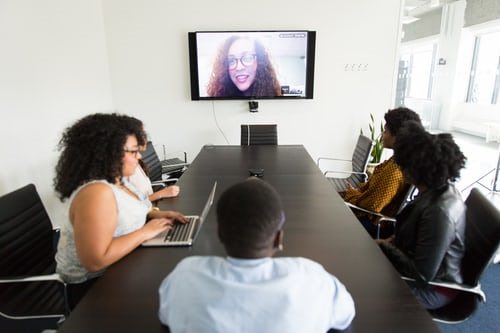
In light of a global pandemic, video conferencing is shaping a digital learning revolution around the world as higher education institutions adapt to today’s technology.
Colleges and universities, and both learners and trainers are leaning into the scalable, flexible, and ever-growing capabilities video conferencing offers, proving just how critical it is right now to adapt instead of remaining stagnant.
Integrating a two-way, group communication platform provides institutions with a streamlined tech solution. As a result, peers, and educators, regardless of geographic location, are united with a more connected educational experience.
A virtual approach to remote learning:
- Encourages collaboration from anywhere
- Provides an “arm’s reach” distance between facilitators and learners
- Creates a nurturing virtual learning environment
- Has the potential to scale and grow
Here are three considerations for institutions integrating video conferencing as a means to expand reach, enrich offerings, and stay connected globally at a fraction of the cost:
1. How broad is the portfolio of service?
When considering a video conferencing solution, it’s best to focus on how that technology is suited for an educational environment:
- Can it integrate with other software students and teachers may rely on like proprietary software, project management tools, email, calendars, etc?
- What features that prioritize interactivity, collaboration, and engagement are included to help support enriched learning and a continual feedback loop?
- How is IT equipped to handle an enterprise conferencing solution or will a free video conferencing platform be able to keep up with the traffic and workflow?
Determine how a group communication product is able to integrate with your current set up or if it is a fully stacked solution that will foster a nurturing and effective educational environment from square one. Furthermore, assess to see if or how it can branch off to support other campus services such as administration, distance learning, etc. for a full circle, one-stop-shop solution.
2. What basic features will empower workflows?
A video conferencing system that is easy and requires little to no set up (ideally browser-based, and zero-downloads) and provides user-centric features complemented with an intuitive interface ensures an educational experience that knows no limits.
With video, a class can take on a more face-to-face approach for off-campus students tuning in and on-campus professors streaming live or pre-recorded content. Live stream to a preferred channel or record for easily stored and retrievable sessions available later.
A lecture opens up to be even more engaging when collaboration is a priority with simple but effective polling gamification that invites learners to participate by asking and answering questions. Plus, video conferencing with management tool offerings gives professors, teacher’s assistants, and department heads’ clear visibility of when students join or leave a session, time spent viewing or participating in a lecture, more concise processes for grading, etc.
3. How does accessibility play an active role?
Video conferencing further enhanced with mobile apps ensures online accessibility for all learners. Especially for colleges looking to expand in developing markets, access to course materials, teacher support, campus counseling, etc. are all made more readily available via mobile devices with a flexible and customizable conferencing solution.
By providing a direct link of access that is affordable, fast, and accessible, students, educators, and administrators can facilitate a higher learning environment when open lines of communication are a top priority.
About the Author:
Dora is a seasoned Marketing Manager and content creator enthusiastic about everything tech – most notably SaaS (News - Alert) and UCaaS. She is an experiential marketing powerhouse having gained unparalleled hands-on experience with customers and prospects throughout her career. Dora takes a customer-centric traditional approach to marketing, creating compelling brand stories and general content. She is a big believer in Marshall McLuhan’s “the medium is the message.”
